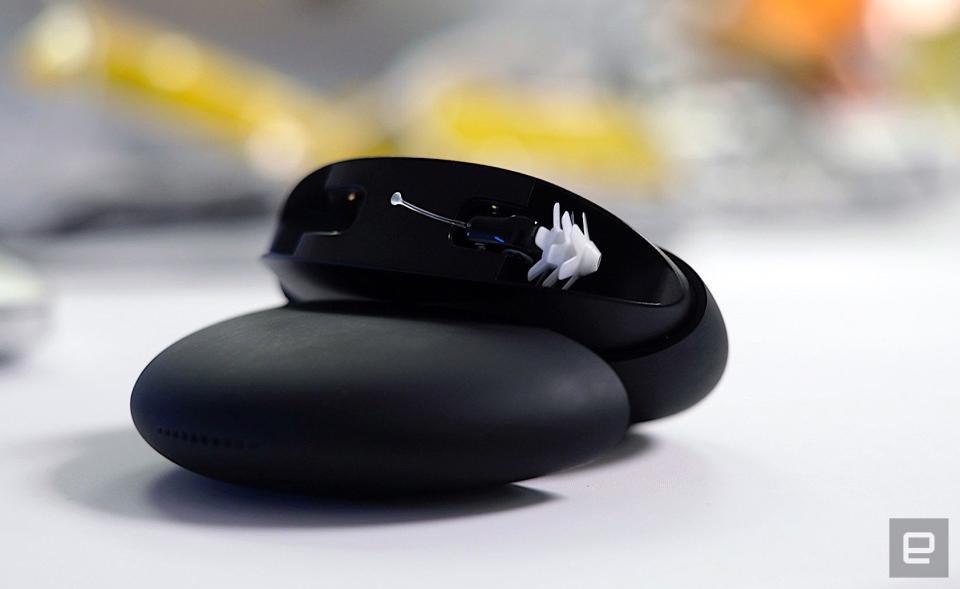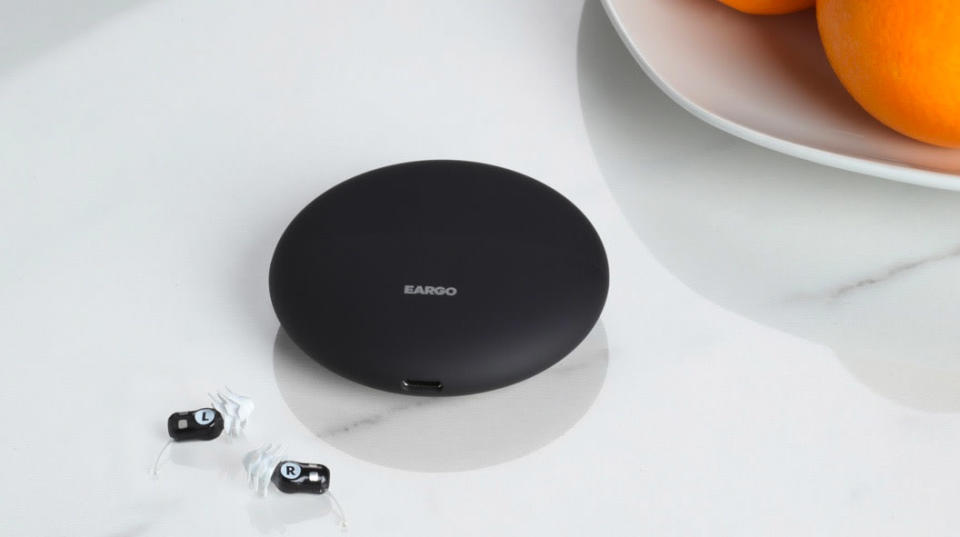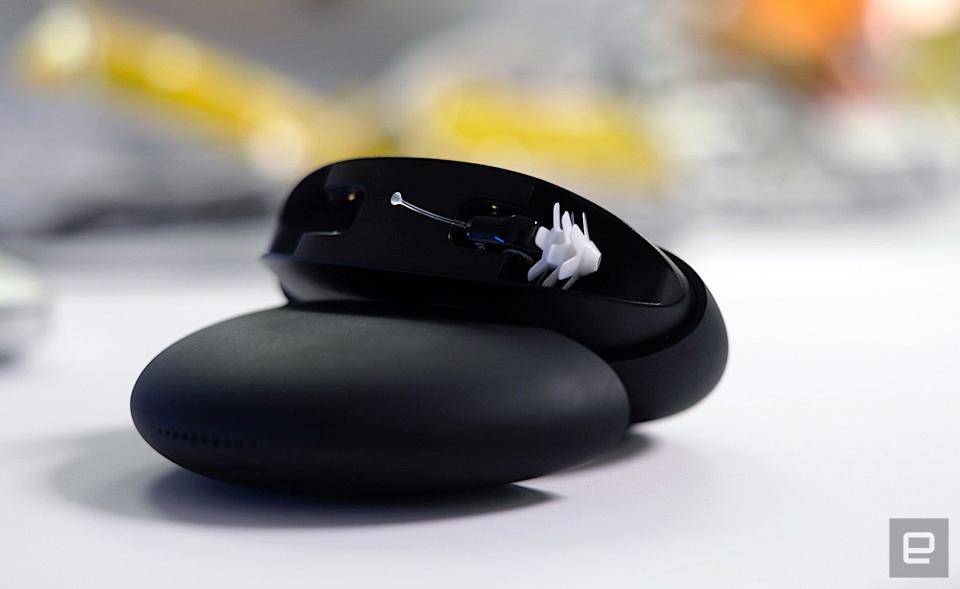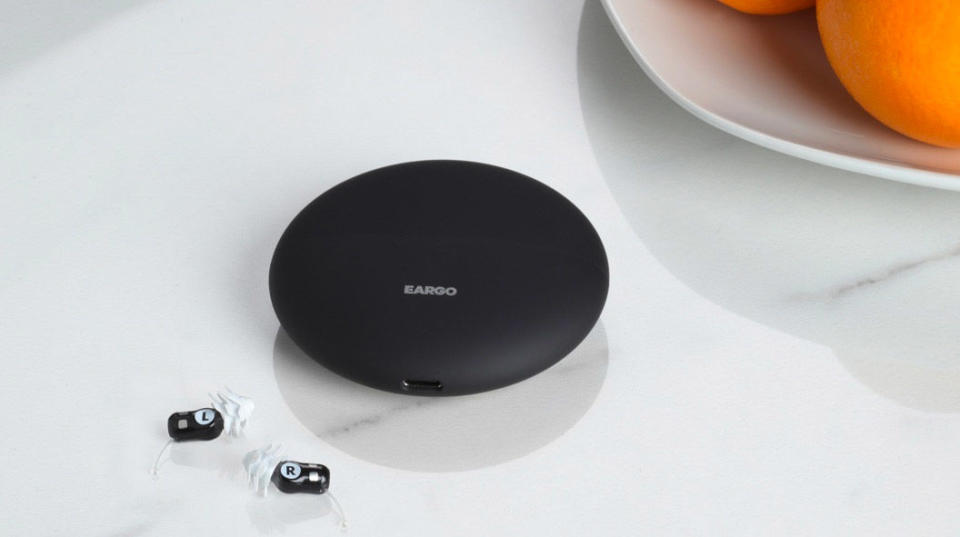Eargo Neo is a hearing aid you might actually want to wear
Getting people to wear them at all is half the battle.
Six years ago I faced a choice: Risk facial paralysis, or potentially lose some hearing in my left ear. I opted for the latter, and two surgeries later, my ability to hear high and mid frequencies on one side is notably diminished. I've tried several hearing aids since then, and while some have worked well, for a combination of reasons (my hearing's tolerable without, the batteries run out too fast, comfort and the stigma / general appearance) I rarely stick with them. Enter the Eargo Neo, a hearing aid that, judging by my list of reasons not to wear something, was pretty much made for people like me.
Eargo has been around since at least 2015, with a couple of products under its belt. The company's website states that it believes people should wear a hearing aid because they want to, not because they have to (and as I don't have to, I have tended to avoid it). This week at CES, the company announced its latest model -- the Neo -- and I'm wearing it right now. I've been wearing it for a couple of days in fact. Importantly, I might even go as far to say I find myself "wanting" to wear it.
The Neo, along with the rest of Eargo's hearing aids, are small, and of the "ITE" (in the ear) or "invisible" variety. This one thing alone, while far from unique, is a major selling point -- that said, I've never seen hearing aids this small. I've tried several BTE (behind the ear) solutions, even fairly discreet ones, but they all suffer from at least two problems for me: They don't feel secure or just look and feel plain ugly (adding to that stigma). As someone who wears glasses, there's also an extra minor annoyance -- the two things vying for space on my ear.

Perhaps the biggest difference with the Eargo line in general,is how the whole packaging looks and the experience feels. The Neo comes in a smooth, circular charging case that looks more "AirPods" than a medical device. The case will charge your Neos every time you pop them back in -- like when you go to bed. According to the company, you can keep your Neos charged for a week this way (you charge the case whenever in-between). That same case contains Bluetooth, so when the buds are in there, you can alter settings via the mobile app. This means you can't do that while wearing them, but it also means the Bluetooth tech is in the case, and not the buds, allowing them to be smaller and have better battery life.
Other modern touches include gestures to change presets (tap the side of your head twice) and an app that lets you create custom audio profiles, send feedback and contact one of Eargo's audio professionals. Nearer to release (the Neo will be available at the end of this month), you'll also have the option to create custom profiles, on top of the four presets. Basically, all this comes together to create a product that's modern and... maybe even cool?
But cool doesn't count for anything if they don't improve your hearing. I'll admit, when I first tried these on a busy show floor, I couldn't tell how well they were working. Later I tried them in our trailer here at CES and I had a much better experience. Eargo states these are designed for people with mild to medium hearing loss, which I feel is the category I'm in. That said, even in a more controlled environment, the "boost" to audio wasn't quite what I was hoping for. It's nearly there, but I find myself craving just a little more. The best I have tried in this regard is the Livio from Starkey. With those, the sound really feels like both my ears are balanced, whereas with the Neo it's more like one good ear, and the other getting a bit of a leg up.
This might sound like a big negative. If the audio isn't quite able to "repair" my hearing, then that surely is the main thing. It is, but then there's so much other good stuff going on here, that I still think this is likely my favorite product out of all the ones I have tried which includes the Starkey, a Siemens model and one called "LifeEar" -- plus various headphones that claim to enhance hearing also.

A decent hearing aid that you enjoy wearing is far better than a better one that you don't (because ultimately you won't). Perhaps when the app is more capable, or with some experimentation with bigger tips etc, I might find an even better configuration. The Neo is also primarily tuned for voice enhancement, and I did notice that that was improved, even if other ambient noises were still lacking.
One last selling point for the Neo? The price. The Eargo Neo cost $2,550 a pair. That might seem like a lot, but regular hearing aids can typically retail for (or upwards of) $2,000 each. That's quite a difference. And if you assume that just means the Neo is a hearing "amplifier" (PSAP) then Eargo claims that it's a Class 1 FDA-regulated hearing aid. Whether that means it works in the same way as something from one of the traditional manufacturers is unclear (the FDA's definition of a "hearing aid" is broad).
For me, it's just refreshing to see a company working to make a product that people actually want to use. If this sends a message to other manufacturers or creates a trend towards sleek, more usable products then that's good for everyone. The Neo goes on sale at the end of this month.





